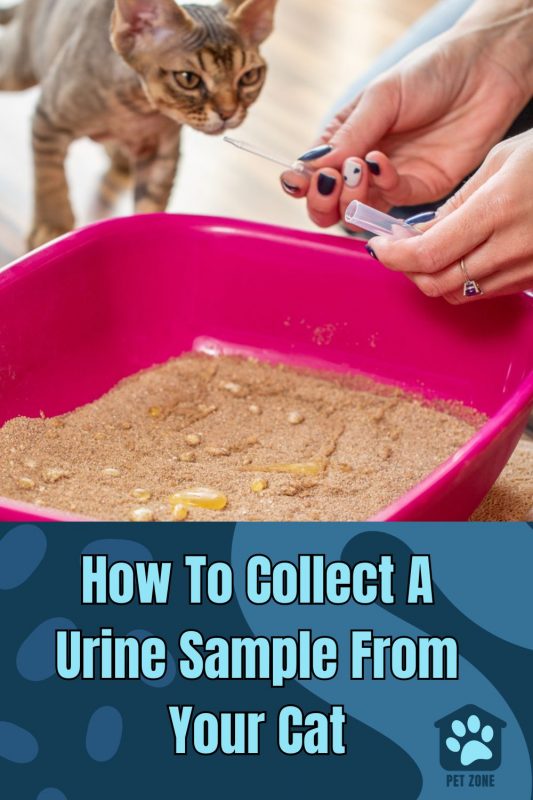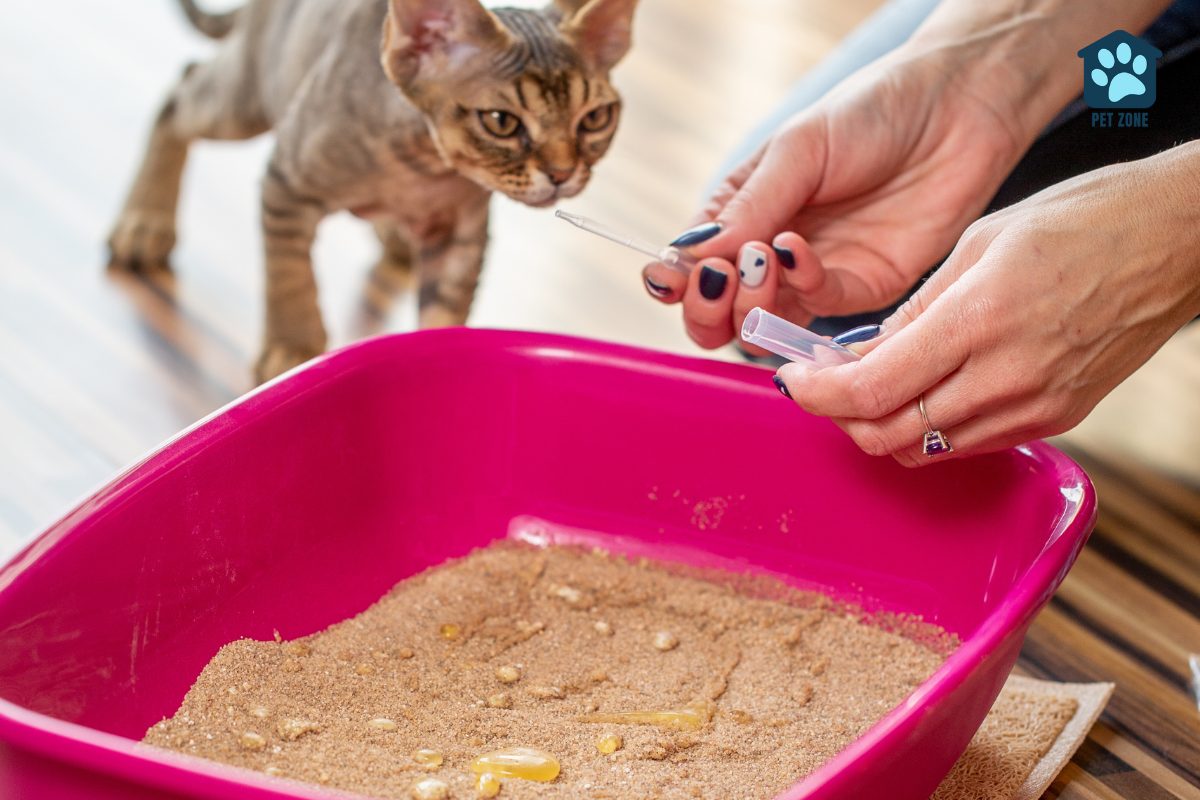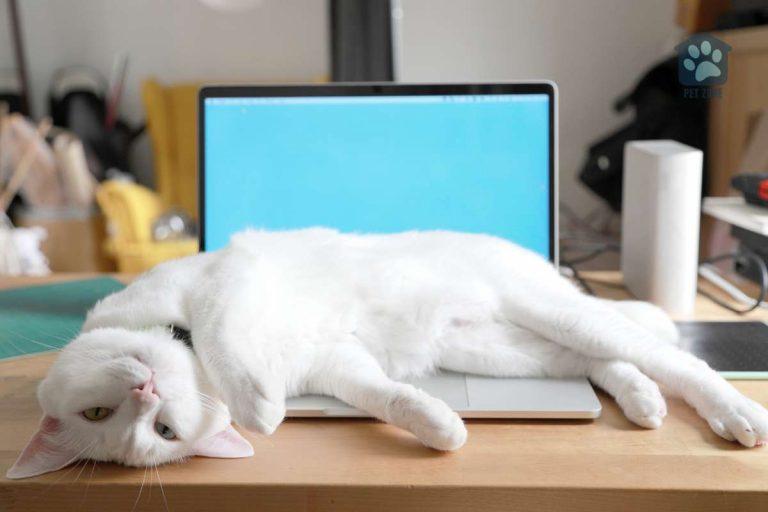Estimated reading time: 7 minutes
If you’ve ever wondered how to gather your furry friend’s urine for a vet visit, you’re not alone. It might surprise you that collecting a cat’s urine can offer invaluable insights into their health.
Our guide is designed to simplify the process, helping you obtain that crucial sample with minimal stress. Keep reading—your kitty’s wellness journey starts here!
Key Takeaways
- Use a clean litter box and non-absorbent litter to gather your cat’s urine without any contaminants.
- Collect the urine with a syringe or dropper within 30 minutes of urination and keep it cool if not going straight to the vet.
- Label the sample container with your cat’s name and date before storing it in the fridge.
- The vet will check for blood, crystals, bacteria, glucose levels, protein levels, and white blood cells in your cat’s urine.
- If you have trouble collecting the sample or if your cat seems stressed, give them space and try again later.
The Importance of Collecting a Urine Sample from Your Cat
Collecting a urine sample from your cat can uncover early signs of health problems. Your vet gets vital clues about kidney disease, diabetes, or urinary tract infections from the urine tests.
Cats often hide pain and discomfort well, so these samples are key to spotting illness early on.
Urine testing is less stressful than other procedures and can be done at home. It’s crucial for detecting issues that might not show up in blood tests or physical exams right away.
A simple urine test gives you peace of mind by keeping tabs on your feline friend’s health.
Necessary Equipment for Collecting a Cat’s Urine Sample
Getting a urine sample from your cat at home can be simple. You’ll need a few key items to make the process go smoothly.
- Use your cat’s regular litter tray because it’s familiar to them.
- Grab some non-absorbent litter or, as an alternative, you can use clean shredded magazine paper.
- Have a syringe or dropper ready. These tools help you pick up urine without making a mess.
- Get a sample pot to store the urine safely. It’s where you’ll put the urine after collecting it with the syringe or dropper.
- Keep a pen handy. You will label the sample pot with your cat’s name and the date.
- Collecting early in the morning is best. It ensures that the urine is fresh for testing.
- Place everything close by but out of your cat’s reach before starting. This way, you have what you need without causing stress to your cat.
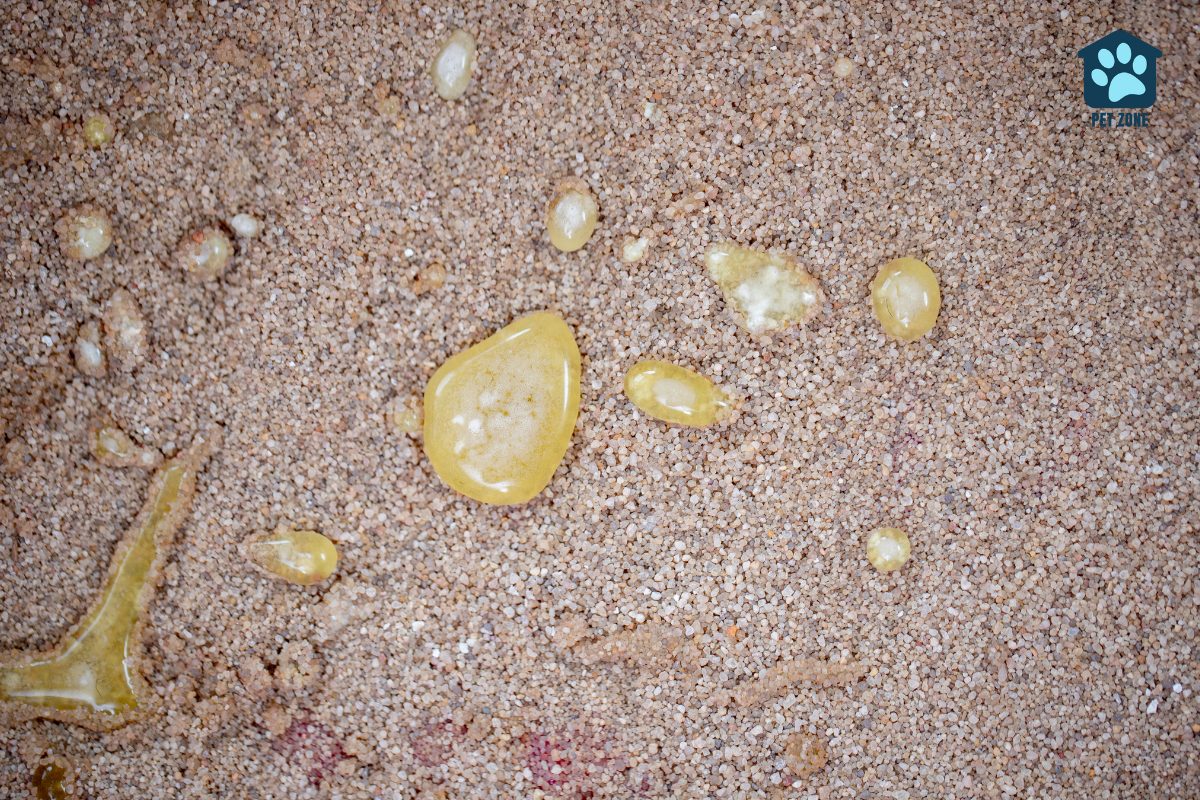
Step-by-Step Guide to Collect a Urine Sample
Start by preparing a clean litter box and isolating your cat. Use the right type of cat litter to absorb the urine, then carefully collect the sample.
Prep the Litter Box & Isolate Your Cat
First, take your cat’s litter box and give it a thorough cleaning. Wash it with soap and water, then rinse it well. Make sure to dry the box completely before moving on.
It’s important to have a sterile environment to avoid any contaminants mixing with the urine sample you need to collect.
Next, find a quiet space where your cat can be alone with its litter tray. This will help your kitty feel safe and stress-free while urinating.
Being in a calm area without distractions or interruptions from other pets or people makes it easier for you to get the sample you need.
Keep an eye on your furry friend, but try not to make them feel watched – they still value their privacy!
Use the Right Litter
Select a non-absorbent litter specifically designed for collecting urine samples from your cat. This type of litter ensures that the urine can be easily collected without being absorbed, making it simpler to obtain a clean and accurate sample.
If specialized litter is not available, consider using shredded paper as an alternative as it can also serve the purpose effectively.
By choosing the right litter, you can facilitate the collection process and ensure that the integrity of the urine sample is maintained for accurate testing by your veterinarian.
Collect the Urine
To collect your cat’s urine, use a clean container or syringe to gather the sample within 15-30 minutes of urination. Refrigerate the urine if you can’t deliver it immediately to the vet.
Encourage your cat to urinate and collect the sample using a syringe or dropper placed in a sample pot.
After your cat has peed, act promptly in obtaining a fresh urine sample. This will ensure that you capture an accurate representation of your cat’s urine for testing and diagnosis by the veterinarian.
Important Tips to Consider When Collecting a Urine Sample
- Ensure your cat is well-hydrated, as this can make it easier to collect a sample. Dehydration can lead to difficulty in obtaining a urine sample.
- Use a clean and dry container for collecting the urine to avoid contamination.
- Keep the collected sample refrigerated if you cannot take it to the vet immediately, as this helps preserve its integrity for testing.
- If your cat is stressed or anxious, give them time and space before attempting to collect a urine sample.
- Be patient and calm when collecting the urine sample from your cat, as rushing or showing signs of stress can make the process more challenging for both you and your pet.
How to Handle and Store the Collected Urine Sample
To handle and store the collected urine sample properly, follow these steps:
- Use a clean, sealable container to collect the urine sample from your cat.
- Label the container with your cat’s name and the date of collection for easy identification. This helps to avoid mix-ups and confusion.
- Store the urine sample in a refrigerator if you cannot transport it to the vet immediately. Keep it chilled until you can bring it to the veterinary clinic for testing.
- Avoid exposing the urine sample to extreme temperatures or direct sunlight, as this can alter its composition and affect test results.
- Wash your hands thoroughly after handling the urine sample to prevent any potential contamination.
What Will the Vet Test in the Cat’s Urine?
The vet will test for blood, crystals, bacteria, and abnormal levels of glucose and protein. They may also check for the presence of white blood cells to indicate an infection.
- Blood: The presence of blood in the urine could signal a variety of issues such as bladder inflammation or urinary tract infection.
- Crystals: Detecting crystals is essential as they can cause discomfort and potentially lead to blockages in the urinary tract.
- Bacteria: Testing for bacteria helps in identifying infections that might be affecting your cat’s health.
- Glucose and Protein Levels: Abnormal levels could be indicative of diabetes or kidney disease.
- White Blood Cells: Their presence indicates the possibility of a urinary tract infection.
Conclusion
In conclusion, collecting a urine sample from your cat is important for their veterinary care. Use proper equipment and follow a step-by-step guide to collect the sample at home. Cleanliness, patience, and careful handling are crucial when dealing with a cat’s urine.
Remember to consult your vet if you encounter any challenges in the process of collection.
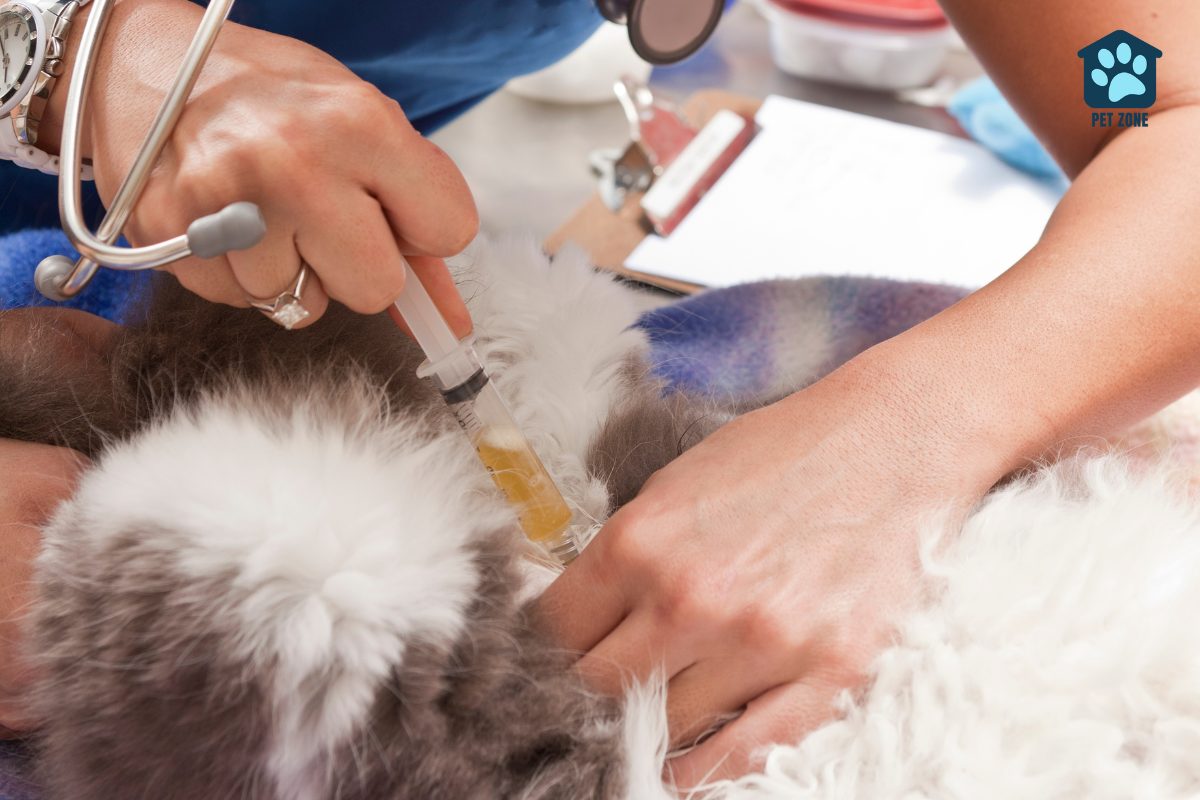
FAQs
1. How do I collect a urine sample from my cat at home?
Start by replacing your cat’s regular litter with a non-absorbent kind, or use a clean tray and plastic wrap to catch the urine. Wait for your cat to urinate, then pour the pee into a collection container.
2. Can I use any container to collect my cat’s urine?
No, you need a completely clean collection container for the pee so it doesn’t get contaminated. Use either a special urine sample kit or ask your vet for a suitable container.
3. What if I can’t get a urine sample from my cat by myself?
If collecting at home is hard, take your kitty to an animal hospital where they can use methods like cystocentesis—getting urine directly from the bladder using a needle —safely.
4. Why does my vet need fresh cat urine?
Fresh samples are best because they have less chance of bacteria growing in them which could change what the test results show.
5. How long can I keep collected urine before it goes bad?
After collecting, you should bring the sample to your vet quickly or store it in your fridge if there’s going to be some wait—but not longer than 24 hours.
6. Is it safe for cats when vets collect their urine using needles?
Yes! Veterinarians are trained on how and when to safely perform this technique known as cystocentesis without hurting your pet; so don’t worry too much about that.
